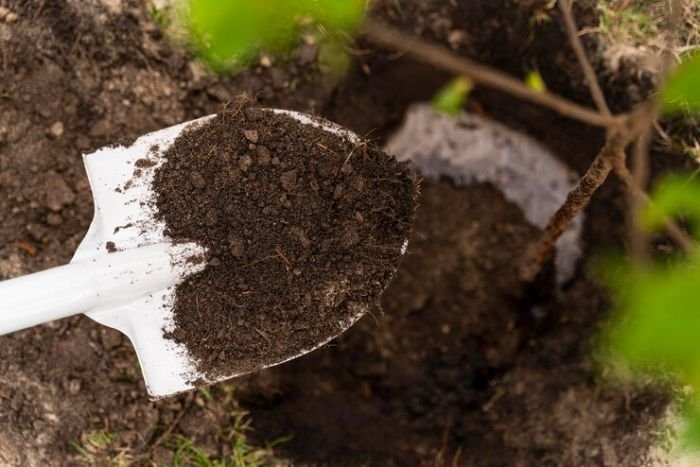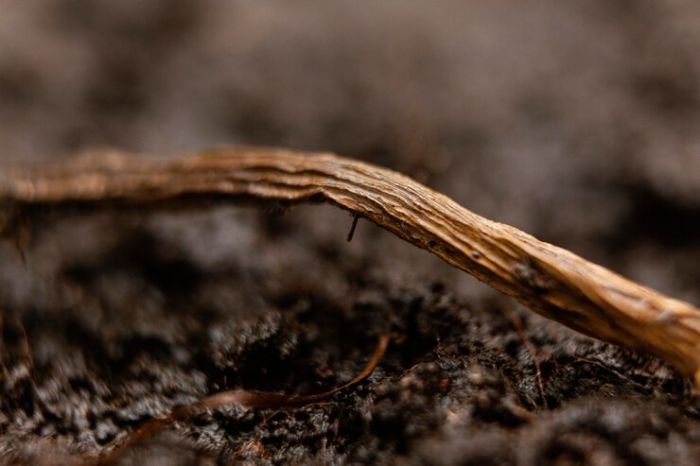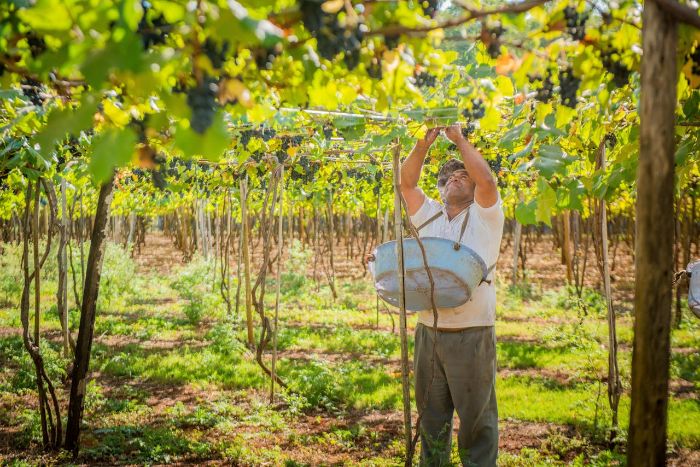Have you ever thought about why some vineyards do well while others don’t? It’s often because of the soil. Getting the soil ready for grape vines is key to a good harvest. We’ll look at what grape vines need in the soil, like the right pH balance and nutrients. This helps you make sure your vines grow strong and give lots of grapes.
Key Takeaways
- Soil preparation is vital for grape vine health and harvest quality.
- Understanding soil characteristics helps create ideal growing conditions.
- Maintaining the correct pH balance is essential for nutrient uptake.
- Identifying nutrient needs can prevent deficiencies in grape vines.
- Proper soil management enhances overall vineyard success.
Table of Contents
Introduction to Soil Preparation for Grape Vines
Soil preparation is key for growing grapes. It helps vines grow strong and healthy. Making the soil right is more than just digging and planting. It means knowing what grape vines need at each stage of their life.
Importance of Soil Preparation
Good soil preparation helps vines grow and produce well. Vines do best in soils that:
- Drain well to stop root rot
- Have enough nutrients for growth
- Have a pH level that helps vines grow
Right soil helps vines grow strong roots. These roots can then take in water and nutrients well. This is key for a big, quality harvest.
Overview of Grape Vine Needs
To plant grapes successfully, know what they need. Important things for growth are:
- Enough sunlight for photosynthesis
- Enough space to avoid vine competition
- Consistent moisture for strong roots
Meeting these needs makes a great place for vines to grow. This leads to a big, good harvest.
Understanding Soil Types for Grape Vines
Finding the right soil for grape vines is key to good grape growing. The best soil is sandy loam or loamy, with great drainage. This keeps the soil moist but not too wet, which is good for the roots.
Ideal Soil Characteristics
The best soil for grape vines has a few important traits:
- It drains well, helping roots grow strong.
- It has a slightly acidic to neutral pH, which helps nutrients get to the plants.
- It has a lot of organic matter, making it fertile.
Testing Your Soil Type
Testing your soil is important to know what it’s like. It tells you about nutrients and pH levels, which grapes need. You can test it at local farms or use DIY kits. Testing often helps keep your vineyard in top shape for growing grapes.
Importance of pH Balance in Soil
Keeping the soil’s pH right is key for grape vine health and getting nutrients. A balanced pH makes sure vines get the nutrients they need. This helps them grow well and produce better fruit. Knowing the best pH levels for grapes and testing the soil helps vineyards do better.
Optimal pH Levels for Grape Vines
The best soil pH for grape vines is between 5.5 and 6.5. This range lets vines take in nutrients well. If the pH is off, vines might not get enough nutrients or could get too much of some things. This hurts their growth and grape quality.
Methods to Test Soil pH
Testing soil pH often is important for soil health. You can use different ways to check the pH, such as:
- Using pH testing kits from gardening stores.
- With digital pH meters for exact readings.
- Getting help from local agricultural experts for detailed soil tests.
These ways help keep an eye on soil pH. This makes sure it stays right for grape vines. It also helps vines get the nutrients they need.
Adjusting Soil pH for Grape Vines
To help grape vines grow well, it’s key to adjust soil pH. The right pH level affects how well plants get nutrients. By adding certain substances, we can make the soil more or less acidic.
This makes sure grape vines get what they need to thrive.
Raising Soil pH
Lime is often used to make soil more alkaline. It does more than just raise the pH; it also improves soil structure. It’s important to know the soil’s current pH and what you want it to be.
This helps figure out how much lime to add. Testing the soil regularly helps make sure grape vines get the nutrients they need.
Lowering Soil pH
When soil pH is too high, sulfur can bring it back down. It makes the soil more acidic, which is good for grape vines. Knowing the soil’s initial pH is key.
This helps decide how much sulfur to add. Keeping the pH in balance helps plants take in nutrients better. This affects how well they grow and how much they produce.

Essential Nutrients for Grape Vines
Knowing what grape vines need is key for their health. A balanced diet helps them grow well, produce better fruit, and stay healthy. By understanding what nutrients they need, growers can pick the best fertilizers and amendments.
Key Nutrients Required
Here are the main nutrients grape vines need:
- Nitrogen – Vital for leaf growth and overall plant vigor.
- Phosphorus – Important for root development and energy transfer.
- Potassium – Enhances fruit quality and disease resistance.
- Calcium – Strengthens cell walls and aids in overall stability.
- Magnesium – Essential for photosynthesis and chlorophyll synthesis.
- Trace elements – Zinc, iron, and manganese play critical roles in various physiological functions.
Signs of Nutrient Deficiency
Spotting nutrient shortages early is key. Watching your grape vines closely can help:
- Yellowing leaves may indicate nitrogen or magnesium deficiency.
- Reduced fruit size can signal potassium deficiency.
- Stunted growth is often associated with insufficient phosphorus levels.
Amending Soil with Nutrients
Amending soil is key for grape vines to grow well and produce fruit. Both organic and inorganic amendments are important for soil care. Knowing the difference helps with fertilizing correctly.
Organic vs. Inorganic Amendments
Organic fertilizers like compost and manure help soil and microbes. They keep soil moist and slowly add nutrients. Inorganic fertilizers give nutrients right away, helping fix soil nutrient levels fast. Choosing the right type of amendment is important for grape growing.
Best Practices for Applying Fertilizers
Here are tips for using fertilizers well:
- Do soil tests to find out what nutrients are missing and what type of amendment to use.
- Use slow-release inorganic fertilizers for a steady supply of nutrients.
- Put organic fertilizers on at the start of the growing season to help vines get nutrients.
Improving Soil Structure and Drainage
Good soil structure and drainage are key for grape vines. Poor drainage can cause root rot, hurting growth and yield. Using the right methods helps vines grow well.

Techniques for Enhancing Drainage
Here are ways to improve drainage:
- Use raised beds to lift the roots above wet spots.
- Try contour planting to help water run off instead of pooling.
- Add organic matter to better the soil’s structure and drainage.
Benefits of Organic Matter
Adding organic matter to soil helps grape vines a lot:
- It makes drainage better, letting water move away easily.
- It makes nutrients more available to the vines.
- It helps microbes, creating a strong soil ecosystem.
Preparing the Planting Site
Getting the site ready is key for growing grape vines. You need to pick the right spot, thinking about sunlight and how close to plant them. Grapes love lots of sunlight, which helps them grow big and produce lots of fruit.
Site Selection and Sunlight Requirements
Grape vines do best with 6 to 8 hours of sunlight a day. This sunlight makes the vines healthy and the grapes taste better. When picking a spot for grapes, remember these things:
- How the sun hits the area.
- The weather and how it changes.
- The shape of the land to avoid cold spots.
Spacing and Layout for Grape Vines
It’s important to space grape vines right for good air flow and sunlight. Most vines should be 6 to 10 feet apart. This lets each vine grow well without getting too close, which can cause disease and less fruit. Important things to think about include:
- How big the grape variety grows.
- Getting to the vines for upkeep and picking.
- How big the vines will get as they age.
Step-by-Step Soil Preparation Guide
Getting your soil ready for grape vines is key. First, clear and till the soil to make a strong base for planting. Tilling makes the soil airy and mixes in nutrients, helping your grapes grow well.
Clearing and Tilling the Soil
Begin by removing any debris, rocks, or weeds from the area. A clean area is important for good soil prep. After clearing, till the soil to make it airy and break up hard spots. This makes it better at soaking up water and nutrients.

Tilling also gets the soil ready for adding nutrients.
Incorporating Amendments
Adding stuff like compost or fertilizers is a big step. It makes the soil rich and gives your grape vines what they need to grow strong. Spread these out over the soil and mix well so every part of the vine gets what it needs.
After tilling and adding nutrients, your soil is ready for healthy vines.
Seasonal Considerations for Soil Preparation
Knowing how to prepare soil with the seasons is key for growing grapes. Different places have their own challenges and chances for grape growing. By adjusting soil prep to your area’s climate, you can make your planting better.
Getting the timing right in planting is important. It helps vineyards work with the local weather for the best results.
Preparing Soil in Different Climates
Every climate needs its own soil prep method. In cooler areas, make sure the soil gets warm in spring before planting. Mulching can keep warmth and moisture in the soil.
In warmer places, managing soil moisture is crucial to avoid drought stress. Your soil prep should match the climate of your region.
Timing Your Planting for Success
Getting the timing right is crucial for growing grapes. Spring is usually the best time for soil prep as the weather warms up and soil gets better. Fall is also good for adding organic matter to the soil.
Knowing when to plant can help grape growers use their local climate and seasons well.
Conclusion – Setting the Stage for a Fruitful Harvest
Getting the soil ready is key for a good grape harvest. Knowing the soil types and choosing the right amendments is crucial. This helps grape vines grow well.
Using sustainable ways not only improves grape quality but also the amount you get. Make sure the soil has lots of organic stuff, the right pH, and nutrients. This makes vines healthy. Keeping the soil in good shape helps the vineyard stay strong for future harvests.
To sum up, a successful vineyard starts with good soil care. By focusing on smart farming and being green, vineyard owners can grow strong grape vines. This leads to big harvests every year. A well-prepared vineyard is a smart move for grape farming’s future.
FAQ
Why is soil preparation important for grape vines?
Soil prep is key for healthy grape vines. It affects growth, yield, and fruit quality. You need the right drainage, nutrients, and pH balance for strong vines and good grapes.
What are the ideal soil characteristics for growing grape vines?
Grape vines do best in sandy loam or loamy soils with good drainage. They like a slightly acidic to neutral pH. This lets vines get the nutrients they need to grow and produce well.
How can I test the soil type in my vineyard?
You can test soil type with local ag extensions or DIY kits. These tests show soil type, nutrient levels, and pH. This info helps growers manage their vineyards better.
What is the optimal pH range for grape cultivation?
Grape vines grow best in a pH of 5.5 to 6.5. This pH helps vines absorb nutrients well. Nutrients are key for vine health and grape production.
What methods can I use to test soil pH?
Test soil pH with local services or pH kits. Checking pH often keeps it right for vines. This ensures healthy vines and better grapes.
How can I raise or lower the pH of my soil?
Add lime to raise soil pH, and use sulfur to lower it. Know your soil’s pH and your goal to pick the right fix.
What are the key nutrients required for grape vines?
Grape vines need nitrogen, phosphorus, potassium, calcium, magnesium, and zinc. Each nutrient helps vines grow, produce grapes, and mature them.
What are the signs of nutrient deficiency in grape vines?
Look for yellow leaves, slow growth, and bad fruit growth. Spotting these signs lets you fix them with the right nutrients or soil changes.
What types of amendments can I use to enrich my soil?
Use organic stuff like compost and manure for soil health and moisture. Synthetic fertilizers give nutrients fast. Choose based on vine needs and growth stage.
How can I improve soil structure and drainage for grape vines?
Use raised beds, contour planting, and add organic stuff. These improve drainage and make roots healthier for vines.










